BMW and Hyundai banking on hydrogen as a complement to battery propulsion
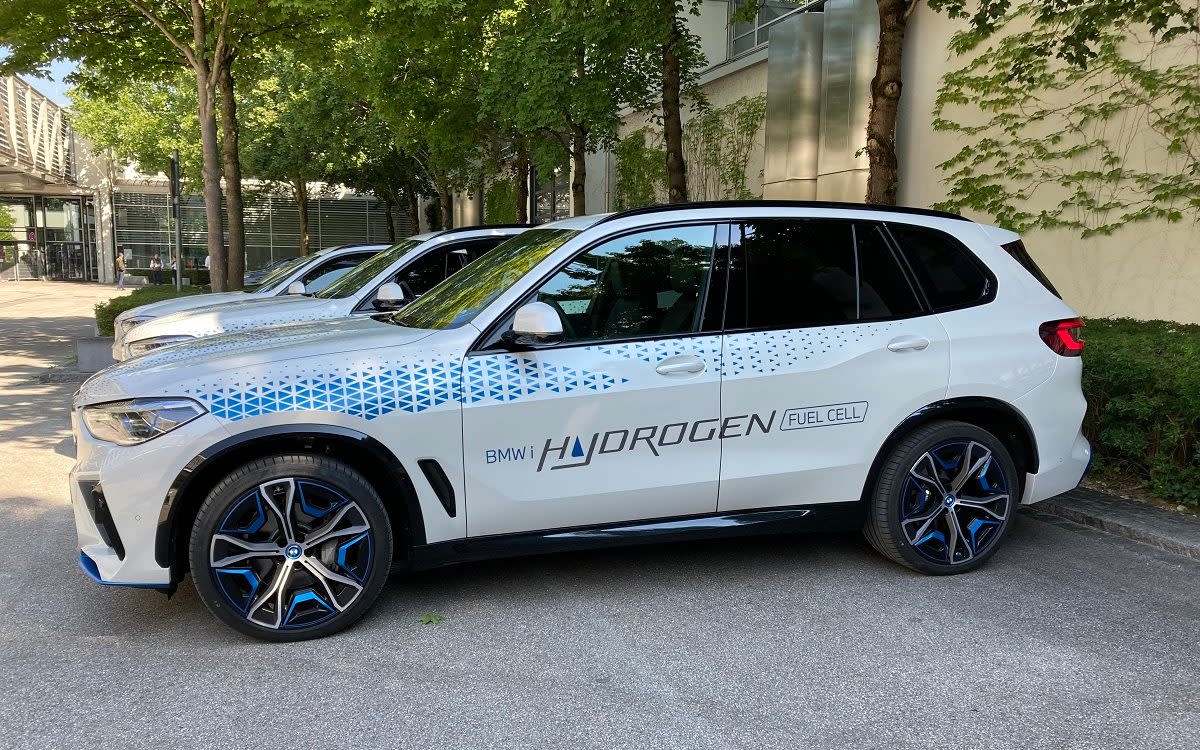
Hydrogen fuel cells have received two big boosts as BMW took the wraps off its new iX5 fuel-cell prototype and Hyundai announced a wide-ranging investment in hydrogen fuel cells aiming to “popularise” this propulsion alternative by 2040.
The Korean manufacturer intends to make fuel cells for private cars, as well as a universal option on its heavy transport trucks and buses, marine and even aeronautical applications. It also unveiled a 671bhp, supercar fuel-cell concept called Vision FK, which uses a combination of battery-electric and fuel-cell propulsion. Hyundai also intends to build fuel-cell cars for racing in the coming years and called for a series for hydrogen fuel cell-powered racing cars to be established.
BMW’s iX5
The here and now, however, is the iX5, a fuel cell version of the X5 large SUV. Although BMW is adamant that it is only a prototype and won’t be for sale until the second half of the current decade, it seemed pretty production-ready in most aspects.
“There’s one more generation of engineering to go,” says Juergen Guldner, head of this fuel-cell project. In mitigation of what seems such a long development period, he points to the long gap between BMW’s first all-electric car concept produced around the time of the 1972 Olympics and the appearance of its first battery-electric production car (the i3) in 2013, although he admits that progress with fuel cells is moving faster than that.
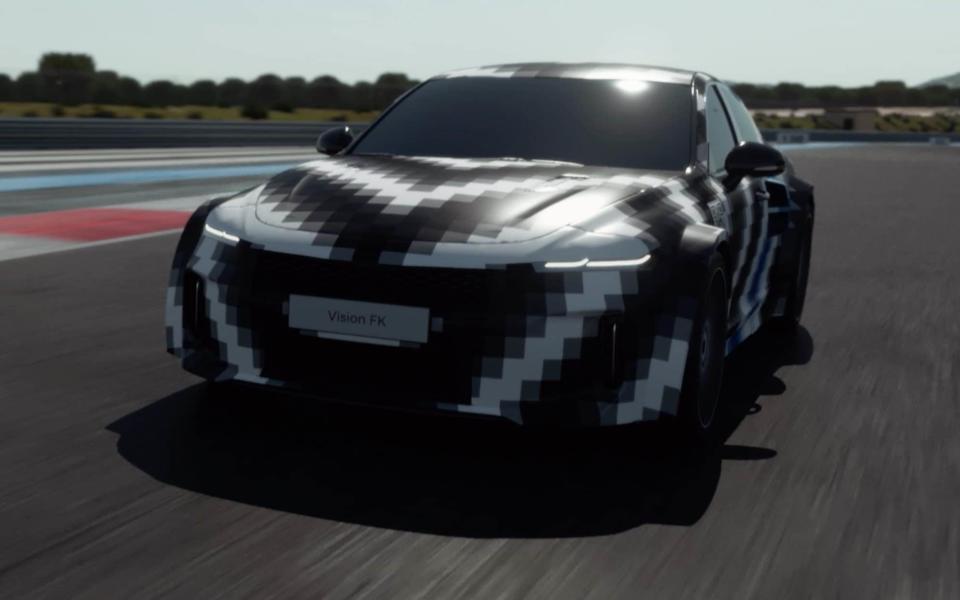
“They are getting smaller and more efficient,” he says. “Our previous fuel-cell model was the 5GT, which only had a 90kW cell stack but it was in a bigger box.”
Guldner’s engineering team is building a small run of prototype fuel-cell X5s next year to go on trial with selected customers and institutions.
BMW’s involvement with hydrogen has been a bit hit and miss. The early 2000s Hydrogen 7 project where a conventional V12 petrol engine was fuelled with liquid hydrogen stored cryogenically was disbanded after the US Environmental Protection Agency (EPA) refused to give it a zero emissions accreditation. To be fair, however, even BMW admits that the idea of a car whose fuel tank boiled off if you left it parked for too long wasn’t the most practical transport solution.
Nevertheless, BMW always kept a weather eye on hydrogen developments and the iX5 prototype seems similar to the way BMW developed its electric Mini as a research tool and precursor to the i Project and i3.
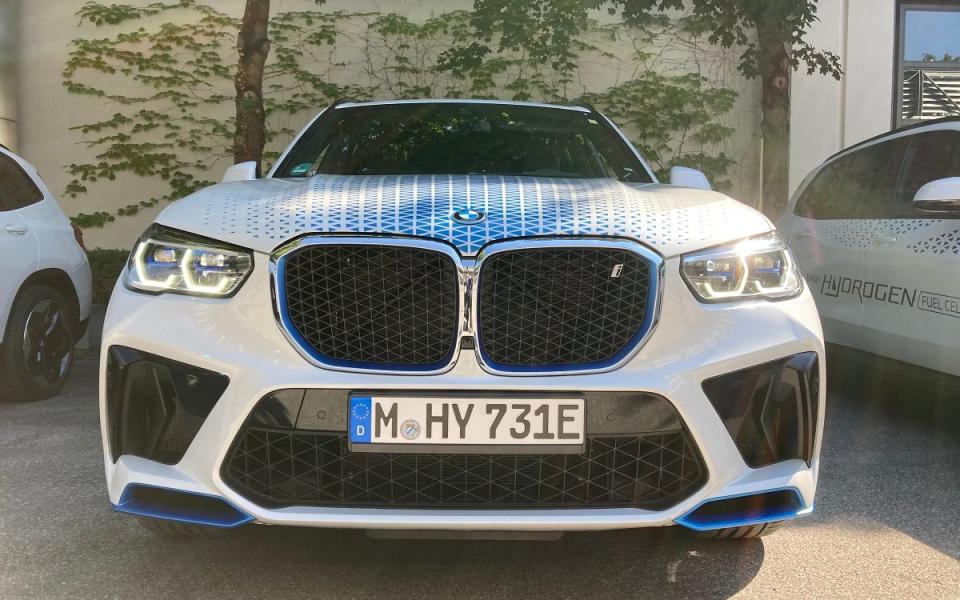
There’s certainly commitment there, as Guldner confirmed that BMW’s much-vaunted Neue Klasse platform structures will be capable of being powered by both battery-electric and fuel-cell drivetrains – the hydrogen would be packed in a series of small high-pressure tanks in the battery box under the floor.
The iX5 fuel-cell prototype weighs the same as the plug-in hybrid X5 (about 2.5 tonnes) and is a bit lighter than the battery-electric version. The Toyota Mirai’s 114kW cell stack has been scaled up for the X5 into a 125kW (167bhp) stack. This is the world’s most powerful in a passenger car, although last week Hyundai said its next-generation fuel cell stacks would include a 200kW unit.
With the lithium-ion energy battery (size undisclosed), the combined power output for this rear-wheel-drive SUV is 368bhp, which gives a top speed 118mph, 0-62mph in 7sec, a range of 310 miles and refuelling of its twin hydrogen tanks (which contain 6kg of hydrogen pressurised at 700 bars) in only three minutes.
“We are also able to use the fuel-cell cooling system to heat the interior,” says Guldner, “so the range in the winter is pretty much the same as that in the summer.”
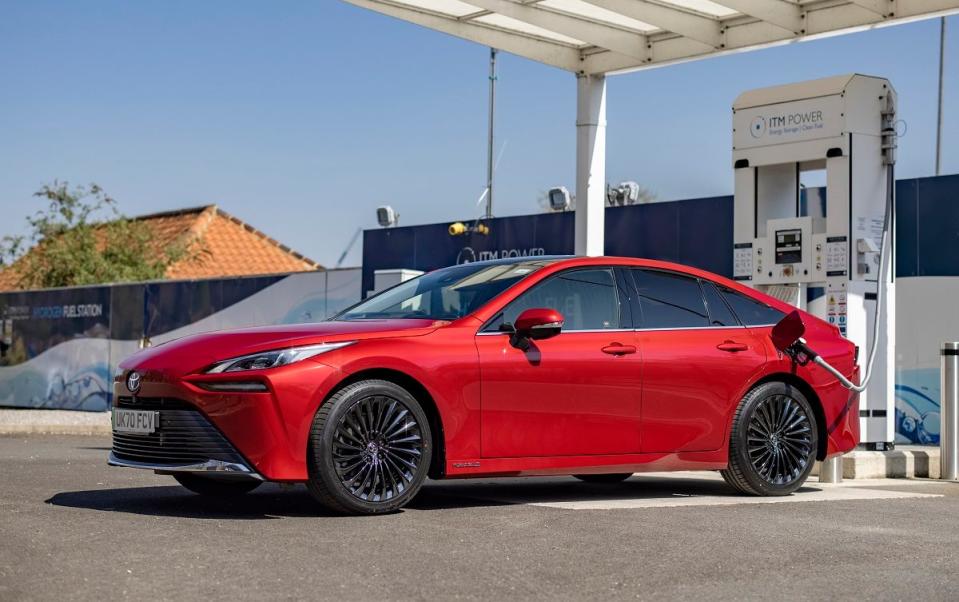
BMW is, of course, a partner with Toyota on this fuel-cell research, but apart from the Toyota fuel cell and ancillaries, most of the rest of the installation is BMW’s own. This includes the twin aluminium-and-carbon-fibre fuel tanks, which are a joint development between BMW and a specialist tank maker new to the fuel-cell business, though Guldner won’t give a name yet.
Scaling up hydrogen supply
“We will decide on the right time to sell the vehicle,” he says. “There needs to be good availability of the fuel and that will be helped by the adoption of fuel cells in commercial vehicles.”
He says there’s a lot of “activity” in hydrogen at the moment, particularly in Europe with the Hydrogen Council which now has over 120 interested members. He suggests that the commercial vehicle, marine and rail activities will help popularise the fuel by making bunkered fuel pumps accessible to passenger cars as well.
This is the sort of step-by-step process of adoption recommended by interested parties in the UK hydrogen business, and as Beth Dawson from Johnson Matthey says: “Once you’ve got the hydrogen there, you can do clever things with it.”
On the road in the iX5
With the M-Sport front-end styling pack, the iX5 looks aggressive and up for it outside the Munich Mobility Show. My driver, Marcus Koban, an engineer on the project, explains that this is a “fun, powerful car and there are several filling stations in Munich so you could use this car across Germany”.
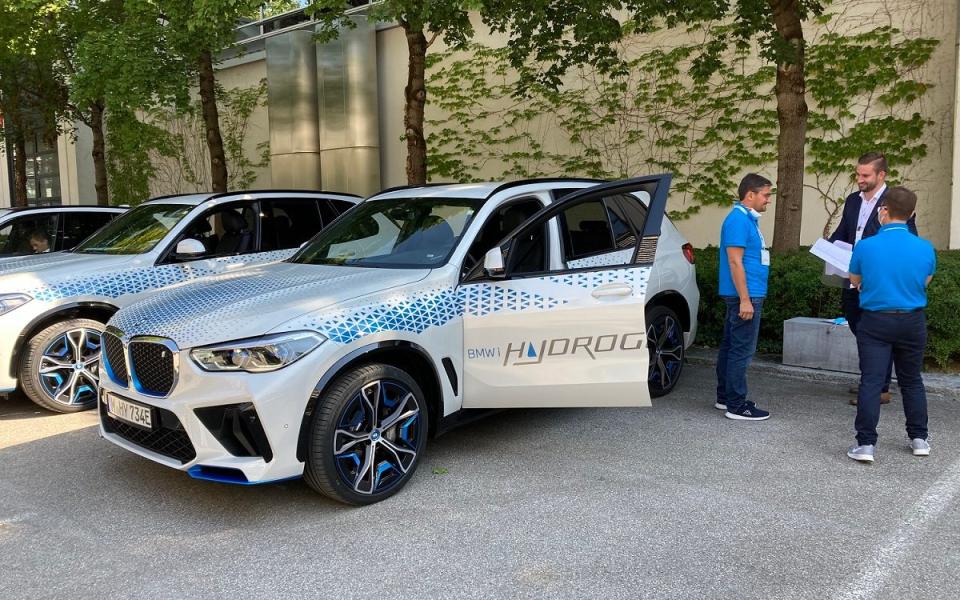
It’s not crazy quick like some battery-electric saloons, but that 368bhp fair wallops the big SUV up the road if so urged. What’s more impressive though is the refinement of the system. Where most fuel cells produce a characteristic compressor whine as air is forced into the cell, in this BMW there is none and although the suspension is still to be refined fully, there’s a refreshing suppleness about the ride and handling on admittedly smooth German roads rather than the crashiness which a lot of heavy, sporting SUVs exhibit.
That’s about it for the passenger seat road test, but we do know that BMW is doing advanced tests at its ride-and-handling centre in the south of France and in Sweden at present, so the project is moving on apace.
But why hydrogen?
While there are criticisms of fuel cells over hydrogen’s environmental credentials (a lot of it very misinformed) and the efficiency of the production process, Guldner defends the iX5 project saying that fuel cells “offer all the advantages of electric driving, the silent cruising and the emissions-free motoring, but the ability to fuel up in three to four minutes.
“Battery electric and fuel cells aren’t in competition, they complement each other,” he says, adding that fuel cells will suit customers who travel a lot, who have no easy access to charging, along with the taxi and chauffeur-drive markets.

He is adamant that the technology is safe and says that an armouring preparation specialist has already prepared fuel-cell cars for secure work, for which they are prized because of the speed of refuelling compared with that of recharging battery cars, which is considered a security risk.
Oliver Zipse, BMW chairman, points out that not everyone in the world has access to fast electric charging facilities, either. “Imagine a world where you don’t have a charging infrastructure, yet you still want to be emissions free?” he says.
“There’s a lot of public debate about the reduced efficiency of ‘green’ hydrogen in the well-to-wheel cycle,” says Guldner, “but you need to look at the bigger picture, the life-cycle analysis.”
Lower CO2 emissions than battery power
He says that if you take entire vehicle into account, from material extraction and production to disposal, “and it’s hard work to do these numbers, but when you do, you’ll find that over a life of about 250,000km [155,000 miles), fuel cells and batteries are about the same in CO2 emissions; in fact, fuel cells are a bit better”.
He also says that even further gains can be found by exploiting countries which have particularly strong winds or where the sun is strong. “Those countries where the yield is better can create electricity,” he says, “and hydrogen can be used as an energy storage and energy carrier. In the end game when all is green and energy comes from renewable sources, we will need to buffer surplus energy when it is dark and there is no wind. The economic implications of stabilizing the system, especially in a decade when there are lots more wind turbines, are enormous.”
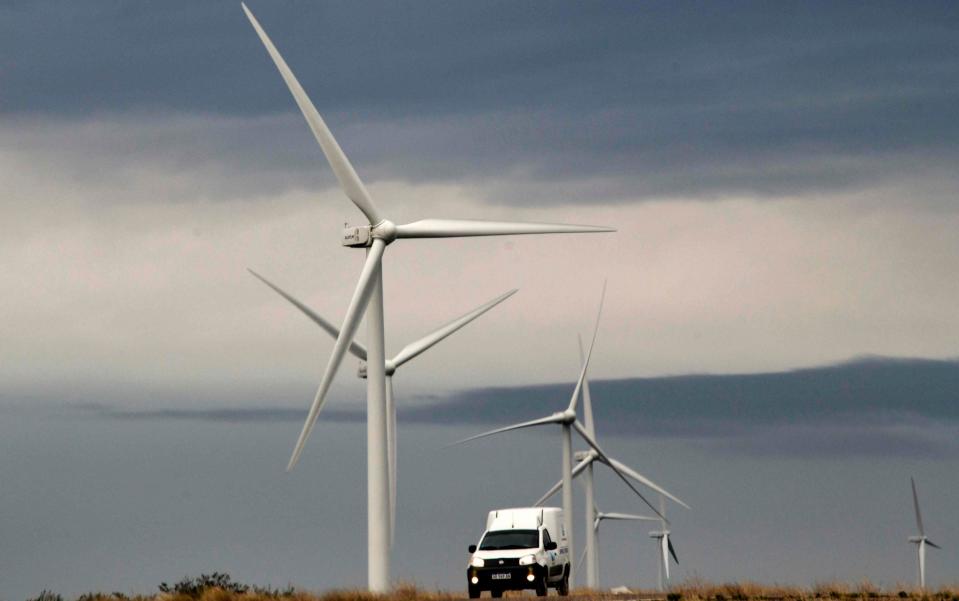
This is pretty much a restatement of those ideas propounded in the late Nineties and early 2000s by Dr Larry Burns, Byron McCormick and Chris Borroni-Bird at General Motors, Dr Ferdinand Panik at Mercedes-Benz and Jeremy Rifkin, author of the 2002 book The Hydrogen Economy. We covered a lot of these ideas at the time, but no one was listening.
Is there any evidence they are listening now?
Who’s listening?
While the UK Government has talked in the vaguest possible terms about the use of hydrogen in industry, haulage, rail and aviation, it doesn’t ever mention passenger cars; the message appears to be that cars will be battery-electric in future and the public is too stupid to contemplate an alternative.
Last year, John Armitt, the formidable head of the National Infrastructure Commission urged the Government to get its finger out on hydrogen. “We don’t have large-scale hydrogen manufacturing in the UK,” he said, “which could be from carbon capture and storage, or electrolysis.
“We need to know [which] in the next five years and we’ve been urging Government for large-scale trials. If we don’t, zero carbon is not going to happen. The hydrogen question is critical.”
Yet in South Korea, Japan and China, hydrogen is seen as a vital adjunct to and in some cases more important than battery-electric power. The European Commission, too, sees fuel cells as an important energy source and carrier. Hydrogen is an essential element in the energy transition and can account for 24% of final energy demand and 5.4m jobs by 2050 claims a 2019 report from the EC and the Fuel Cells and Hydrogen Joint Undertaking.

It cites hydrogen and synthetic fuels as worthy candidates for long-distance transport (both trucks and cars) and says that the hydrogen refuelling structure is faster and up to 15 per cent more space efficient than electricity recharging. While transport is an important part of a hydrogen infrastructure, the report also cites its key role of balancing and stabilising the electricity grid.
A July 2021 McKinsey report for the European Hydrogen Council, Hydrogen Insights, estimates there is a total of 359 major hydrogen projects around the world (many of them in Europe), with a total associated investment through 2030 which will amount to $500 billion US.
It sees a massive increase in the capacity of low carbon or green hydrogen production by 2030 and that a significant amount of that (30 per cent and counting) will be away from the centres of consumption, where it will be transported in ships or pipelines. Hydrogen can be mixed with natural gas in pipes, or be transported in defunct natural gas pipelines.
Conclusion
While BMW would doubtless say it has never left the hydrogen game, in building the iX5 and allowing passenger rides and no-holds-barred interviews with senior executives, it’s a strong signal that they see this as a viable technology.
BMW is a hard-nosed business and doesn’t just wander down rabbit holes of technical development without seeing a payback. As Zipse says: “We are business people and we need to grow, and if we see potential in there [fuel cells] then why shouldn’t we do it? We think the market for hydrogen vehicles will come from the top down… and we think it will come [for passenger cars] at the end of this decade.”
And it seems so simple. As trucks and buses convert so passenger cars can also use the fuel. Even if it’s at 350Bar (as the commercial industry can’t make up its mind about which pressure to use), you can still get half a fill on a 700 Bar tank and the fact the fuel is there – wherever ‘there’ is – will only help increase the utility of running a fuel-cell car.
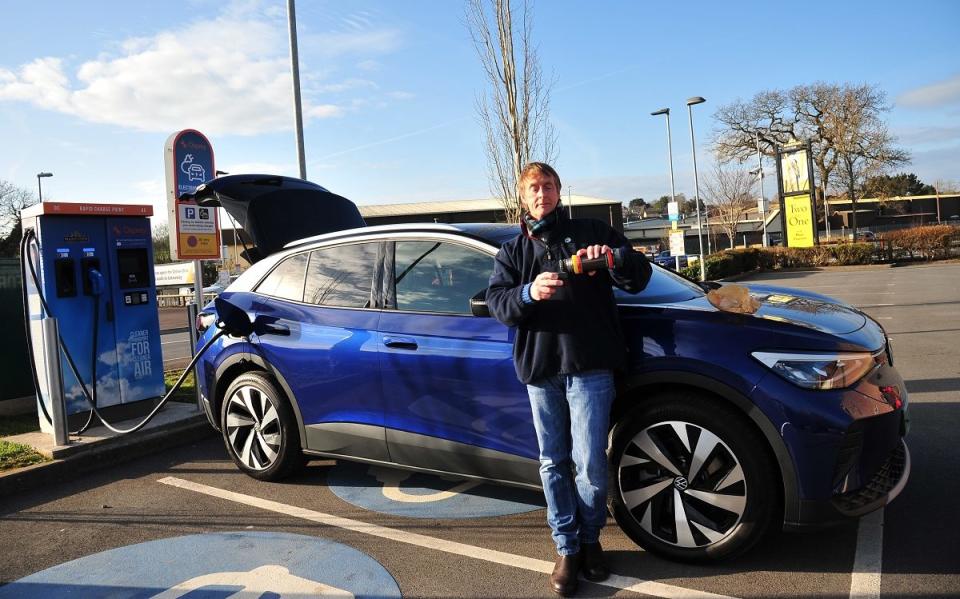
And the big customers for this tech won’t necessarily be you and I but it will be important for the private hire (PHV), chauffeur and taxi business in the UK. According to the Department for Transport, in 2020 there were just under 300,000 PHV and taxi vehicles in the UK, mostly based in large conurbations, where there is a lot of pressure on fast-charging resources for battery-electric vehicles owned by the public.
For the operators, hours spent recharging is money down the drain; for the public thinking of buying a battery-electric car, a fast charger with a queue of taxis around it is a major disincentive not to buy.
So the big question on hydrogen fuel-cell vehicles is not why, but when, although our Government seems not to even want to consider the options. As Zipse points out: “To limit the world into one drivetrain could be a very, very expensive adventure…”
For new and used buying guides, tips and expert advice, visit our Advice section, or sign up to our newsletter here
To talk all things motoring with the Telegraph Cars team join the Telegraph Motoring Club Facebook group here

 Yahoo News
Yahoo News 
